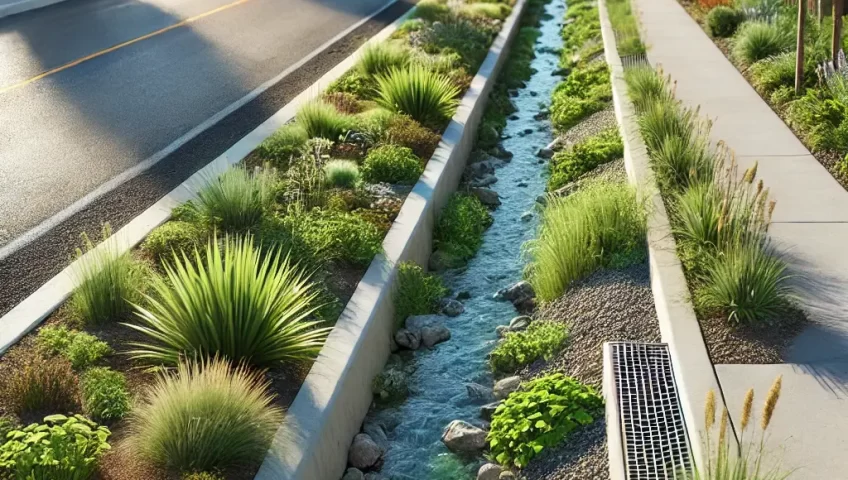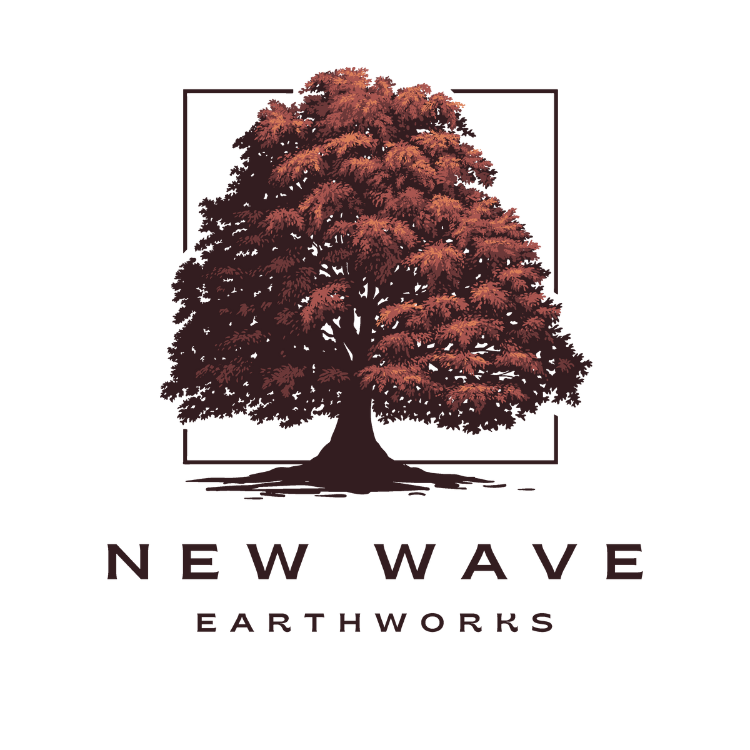British Columbia is no stranger to rainfall. From the Lower Mainland to the Fraser Valley, stormwater runoff is a serious concern for both urban and rural environments. But what if nature itself could help manage excess rainwater, clean pollutants, and beautify our communities?
A bioswale is a specially designed vegetated channel that manages stormwater runoff. It slows water down, filters out pollutants, and allows water to soak into the ground. In BC’s rainy seasons, these systems are particularly valuable, especially in areas with a mix of residential, commercial, and natural landscapes. Bioswales are cost-effective, environmentally friendly, and increasingly recommended for sustainable land development.
In this article, you’ll learn what bioswales are, how they work, where they fit into BC’s ecosystems, and why they’re a smart choice for property owners, developers, and municipalities alike.
What Is a Bioswale?
A bioswale is a shallow, landscaped trench designed to direct, collect, and treat stormwater. Unlike regular ditches, bioswales are lined with vegetation like grasses, perennials, and native plants. Their gently sloped sides and engineered base layers help slow water down and filter pollutants before they reach rivers, lakes, or the ocean.
The 4 key components of a bioswale are:
- Native vegetation.
- Engineered soil layers.
- Gravel or stone base.
- Optional underdrains and overflow outlets.
They’re often placed in parking lot medians, along roadsides, or between buildings, offering both aesthetic and functional benefits.
Why Bioswales Matter in BC’s Rainy Climate
In British Columbia, where heavy rains are common, managing runoff is crucial to prevent:
- Flooding in urban areas.
- Erosion of natural landscapes.
- Pollution of waterways like the Fraser River and Burrard Inlet.
Bioswales help slow and absorb water, reducing the volume and speed of runoff. This prevents contaminants from reaching storm drains and eventually BC’s sensitive ecosystems.
A study showed bioswales can reduce stormwater runoff volume by up to 88% and remove 95% of common pollutants like zinc, oil, and sediments.
How Does a Bioswale Function? A Natural Filter in Action
Bioswales use 3 main processes:
- Infiltration: Water soaks into the ground instead of flowing directly into storm sewers.
- Filtration: Vegetation and soil filter pollutants such as oils, fertilizers, and heavy metals.
- Evapotranspiration: Plants absorb water and nutrients, releasing clean water back into the atmosphere.
They also recharge groundwater, prevent erosion, and support pollinator habitats. In essence, a bioswale mimics nature’s way of dealing with excess water.
Where Are Bioswales Used in BC?
You’ll find bioswales being used in these 4 kinds of spaces, especially in the Lower Mainland:
- Parking lot medians in Coquitlam and Burnaby.
- Municipal parks and streetscapes in Vancouver.
- Commercial developments in Langley and Surrey.
- Strata properties and residential subdivisions throughout Metro Vancouver.
Expert civil construction companies incorporate bioswales into their civil and environmental construction projects to ensure your property is ready to handle excess water.
How Can You Design an Effective Bioswale in BC?
British Columbia, especially the Lower Mainland has diverse, complex, microclimates, soil conditions, and geographical positioning. Every patch of land in the area is different and potentially unique. However, you can use some general guidelines to create an effective bioswale anywhere in the area. Here’s how you should fine-tune the following 4 elements:
- Soil infiltration: The soil infiltration rate should be 0.5 inches/hour. If the soil condition is poor, you can add sand or install an underdrain.
- Slope: The slope of the swale should be between 1-4%. Anything steeper may require check dams.
- Size: The swale area should be 1% of the drainage area.
- Vegetation: You should use native, deep-rooted species that can handle wet and dry conditions.
These 4 native plant species are perfect for planting around the bioswale:
- Pacific Rush (Juncus effusus).
- Sword Fern (Polystichum munitum).
- Douglas Aster (Symphyotrichum subspicatum).
- Red-osier Dogwood (Cornus sericea).
These plants slow water, improve filtration, and reduce erosion.
Benefits Beyond Water Management: Why Bioswales Are a Win-Win
Bioswales don’t just manage water runoff for you. They have multiple benefits beyond water management. The most notable 4 you’ll experience are:
- Improved air quality through added vegetation.
- Enhanced property aesthetic with natural greenery.
- Support for wildlife such as birds, bees, and butterflies.
- Lowered infrastructure costs compared to underground storm systems.
They can also increase usable land area by reducing the need for large stormwater ponds.
Maintenance Tips for Long-Term Success
Bioswales require low but consistent maintenance. You have to maintain the following 4 things:
- Remove debris and trash after storms.
- Re-seed or re-plant vegetation as needed.
- Mow or prune selectively (avoid complete clearing).
- Minimize the use of fertilizers and herbicides.
A well-maintained bioswale will look beautiful while performing its environmental role for years to come.
New Wave Earthworks. Experts in Civil Construction.
At New Wave Earthworks, we combine expertise with a commitment to quality. We have nearly a decade of experience working on civil, environmental, watershed, and landscape construction projects in Greater Vancouver. We understand client needs, and project demands, and only use the best materials available for affordable rates.
Ready to get started? Contact New Wave Earthworks today for a consultation and see how Allan Block walls can transform your property. Call us at (604) 855-2603 or email us at info@newwaveearthworks.com to get a free quote today!
Conclusion
As British Columbia continues to grow, sustainable solutions like bioswales are essential. They protect our waterways, reduce urban flooding, and enhance the visual appeal of our communities. Whether you’re a homeowner, developer, or city planner, incorporating bioswales into your design can yield long-term environmental and economic benefits.


